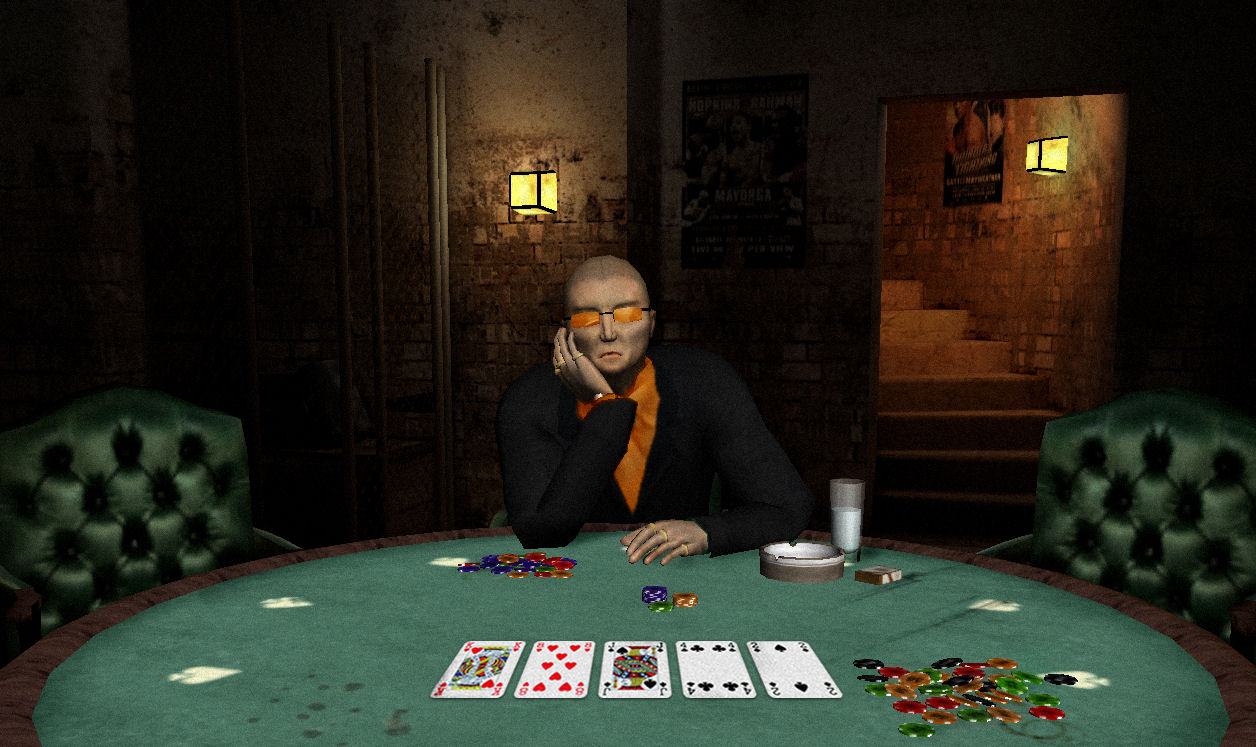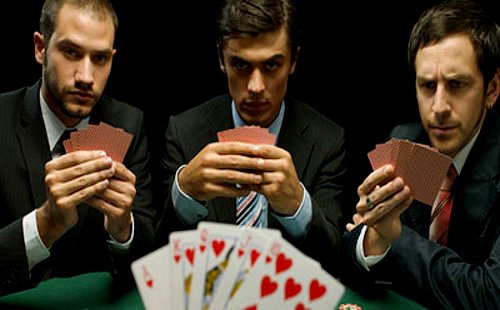Poker Body Language
Body language, for the most part, is the best indicator of what kind of cards your opponents have and what strategy they have in mind. This is especially true for advanced players, who have learned to manage their betting patterns and strategic tells. If you want to increase the odds of victory drastically in your favor, learning body language just might be your ace in the hole. I know some of you are saying, “Well if I have a non-suited 7-2 and they have 4 of a kind they will almost definitely win! I doubt knowing body language and poker tells would help me then”.
Keep in mind, reading body language is an art not a science, but thanks to Boeree's years of experience at the poker table she highlights some classic behaviors of bluffers, and reliable strategies. Re: Poker & Body Language From playing online to live tables for cash vs. Tournament play the differences are very noticeable to an average player. People are more uptight or overly confident in. How to Tell If Someone’s Bluffing: Body Language Lessons from a Poker ProNew videos DAILY: Big Think Edge for exclusive video lessons f.
If you decide to disconnect from virtual play for a while to play in alive setting, you need to think about how body language and physical appearanceare going to affect your performance. In a real-life setting, poker players tryto read other players by looking at the way they are dressed, the way they holdthemselves, and their facial expressions, so you need to be careful not to givethe wrong impression (unless you want to give them false tells, of course, butthat’s a risky strategy).

I’m not saying you have to wear a big cowboy hat like those guys in poker movies,but you will need to think carefully about how you dress and how you’representing yourself to the other players at the table.
What to wear
The number one tip would probably be this: don’t try too hard! If you showup at a live poker game wearing a tuxedo like a James Bond wannabe, people arenot going to take you seriously. This isn’t a movie! Lots of poker playersfavor clothes that cover their faces, such as hoodies, hats, and sunglasses, asthese can help to minimize visible physical tells. But, conversely, they canalso draw attention to you, perhaps mark you out as someone who lacks theexperience to control their physical tells and might, in specificcontexts, be perceived as a sign of weakness.
Another potential downside to covering your face with hoods and glasses isthat you may be preventing yourself from using your facial expressions to givefalse tells. As we mentioned earlier, this can be a risky strategy, but ifyou’re an experienced live-action player and confident in your ability tomanipulate your opponents’ thinking with false physical tells, then ditch thesunglasses and hoodies.
You need to think carefully about all of these variables, where you’replaying, who you’re playing with, and what you feel comfortable wearing whenplanning your outfit for a live poker game. As it’s essential to stay relaxedand calm during a poker session, choosing clothes that you feel mostcomfortable in is probably the best approach.
Body language


The other factor in this equation is body language beyond the facial expressions mentioned above. It’s common to hear statements such as “80% of all communication is non-verbal,” and, while there is some debate on the exact figures, what is doubtlessly true is that non-verbal communication, i.e., body language, is incredibly important, especially in the context of a live-action poker game.
Strong = weak
A very general rule to follow is this: strong body language means the playerhas a weak hand, and weak or disinterested body language means the player has astrong hand. For instance, if a player puts on a brash and confident air whenmaking bets by raising their voice, slamming chips about, and being veryemphatic in their movements, then they may well be trying to overcompensate forweak cards. If, on the other hand, a player sighs dejectedly, folds their arms,and leans back from the table during play, they may well be sitting on a greathand.
These are very general rules of thumb, of course, and you’ll also need toobserve other player’s behavior over time, looking for patterns and trying toconstruct some frame of reference. Try and gauge what their normal behavior isand watch out for deviations from it, then you will start to get a moredefinite sense of how to interpret their body language.
For example: what is their regular breathing pattern? Can you notice theirbreath becoming heavier or shallower? Do they like to maintain eye contact, ordo they prefer to look away? Is their general body language open, or closed?When you have established some reference points, you will notice when theirbehavior deviates from this norm, which may well indicate that the player isholding some good cards. Be observant of and responsive to changes in youropponents’ body language, and you could find yourself improving your game.
In short, poker is a complicated game, and successful players have to beable to process large amounts of information from several channels to win. Youropponents’ physical appearance is one of those channels. Tune in to it.
Poker is a game of subtleties. While the luck of the draw obviously has some bearing, much of it actually has to do with deceiving opponents, figuring out people’s tendencies and reading their tells. And as you probably guessed, a lot of that has to do with understanding their body language.
Body language, for the most part, is the best indicator of what kind of cards your opponents have and what strategy they have in mind. This is especially true for advanced players, who have learned to manage their betting patterns and strategic tells. In these cases, reading and figuring out their body language can frequently make the difference between making a good or bad play. Read it right and you can make the correct decision. Read it wrong and you’re setting yourself up for a big loss.
Online Poker
Of course, body language is completely out of the equation during online poker. If you play primarily on a computer, you can probably skip this story — it won’t really matter in your results. If you do intend to play live poker, though, being well-versed in body language will get you tremendous results.
Reading People
Poker Body Language Book
- Size your competition. When you first sit down (before cards are dealt), look at your competitors and get a quick read, making note of who looks aggressive, who looks passive and which ones don’t seem to care what’s going on. These are first impressions and could change during the course of the game, but they’re good for establishing a baseline with each player. Aggressive players tend to act loud and boisterous naturally. Passive ones are more laid back and relaxed. Those who seem to be in a drinking and partying mode are the ones just throwing money away.
- Fake disinterest. Less experienced players will fake disinterest or disappointment when dealt a good hand. Any time this happens, their lying body language is almost always too obvious to mask. If you know you’re going up against an inexperienced opponent, this is the likely quickest tell to grasp. Aggressive but inexperienced players will likely be cursing loudly and overacting, too, so be aware of that. If you’re going up against season pros, though, they’re usually very disinterested during starts of games, so give it no meaning.
- Too aggressive. When players get too aggressive in their body language, it’s always good to bet that they’re bluffing. While it’s not 100% guaranteed, extra-aggressive stances, like staring down other players, slamming cards or throwing chips, are a dead giveaway that they’re trying to cover up a bad hand.
- Check breathing. Rapid breathing means a player is excited, which usually equates to having a good hand. This is especially true when you notice their breathing change suddenly after they check their cards.
- Check speech. Did someone just start a conversation totally unrelated to the game at hand? While we usually equate that with disinterest, it’s misplaced: he or she sat down at a poker game, so we all know where the interest lies. Chances are, they have a strong hand and are trying to distract from it.
- Eyes on the chips. When a player looks at their cards then glances involuntarily at the chips, that usually denotes a good hand. Subconsciously, they peeked at the chips so they can get an idea of how much they will win, which only happens when they get good card combinations.
- Talks to themselves. Some players do talk to themselves. If someone who doesn’t suddenly mutters something during a flop, that usually indicates they got a strong hand from the dealt cards.
- Repeatedly peeking at cards. When a player repeatedly checks his cards after new cards are dealt on the board, they’re likely making sure they have strong drawn hands. You can sometimes deduct what kind of hand they have from this, so be very alert during these times, as you’ll need to make calculations on your feet (or on your ass, most likely).
- Sitting upright. When a player changes posture to sit upright, it’s usually a big tell that they’ve got a good hand and are ready to play. Doing this allows them to get a clearer view of the table and the other competitors. If you don’t have a good hand, you may want to pass as soon as you recognize this.
- Talks to you too much. Players who talk to you too much are trying to mine you for tells — it’s that simple. Hopefully, you have developed a strategy for deadpanning them or you’re screwed. Alternatively, you can also have a premade aggressive spiel to just insult people needlessly — that usually works well for these types.
- Calling or betting too quick. This usually means a player has a good drawn hand, as opposed to a good dealt hand. You can make a decision from here based on how strong your cards are.
- Calling or betting too long. When a player is sure they have you beat via a very strong hand, they will almost always bleed the process of betting, wasting time to better draw you in. If your hand isn’t too sweet, you might want to pass on this.
Controlling Your Tells

You can read other players all you want, but if you don’t control your own body language, there’s a good chance the other players will just read you like a newspaper. So, how exactly do you cover up your own tells?
Poker Table Body Language
- Wear sunglasses. Covering the eyes is a great step to keep people from seeing your eye movement. This is especially useful if your eyes often give you away.
- Calm yourself. The more calm you are, the less you’ll succumb to sudden excitement or sudden disappointment. That means, you’ll have less visible emotion to read.
- Sit upright. Try to sit one way throughout the game. If you sit upright regardless of your hand, it will become a lot harder to tell what you’ve got from posture alone.
- Always pause before acting. Regardless of what hand you’ve got, count to five (or ten or fifteen) before taking any action. This keeps you from rushing into actions, which can be a tell in itself.
- Avoid conversation. Unless you can use your conversation skills aggressively, just shut up and say as little as necessary. Good players can literally get a goldmine from the things people say around the table, so the less you share, the better.
- Act selectively. Minimize acting at first and focus on keeping your actions under control. Acting is a tough road to follow in poker and very few people are able to pull it off really well on a consistent basis.